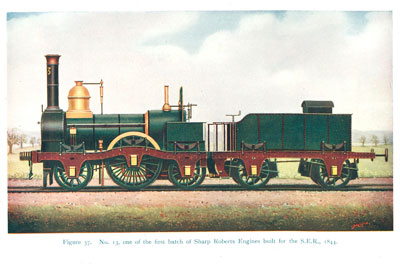Description
The title is of course a little misleading, There had been horse-drawn railways in and around London for decades, but this, sweeping through Bermondsey, Rotherhithe and Deptford on its majestic viaduct was the first steam worked passenger line.
Alfred Rosling Bennett (1850-1928) was not only an accurate railway and locomotive historian, but was also a prominent electrical and telephone engineer. Educated at Belle Vue Academy at Greenwich he had hoped to study locomotive engineering, but he accepted an offer to join the Indian Telegraph Dept., was credited with several innovations and after returning to England set up the first telephone line in the country in 1877. In the 1880s he was involved in the development of incandescent electric lighting, established the telephone network in Guernsey in 1895, and became engineer to several municipal telephone systems in England and Scotland, one of which, Kingston upon Hull, remained independent of British Telecom until late in the 20th c. He became a prolific writer on railway matters and in 1890, he organized the railway section of the International Engineering and Electrical Exhibition in Edinburgh He achieved the distinction of becoming Vice-president of the Institution of Locomotive engineers in 1911.
He was familiar with the Greenwich line from the 1860s, and used to enjoy watching the trains with his younger brother. It could hardly be called train spotting as the estimable publications of Mr. Ian Allan were some decades off. Also the locomotive numbers were carried low down, on the rear tender buffer beam, or high up on the front of the chimney and could only be seen with difficulty. However, the brothers could tell the locomotives apart and evolved the charming fantasy of allocating a fictitious owner to each. So there was “The Queen’s Engine”, “Pappa’s, Engine”, “Mamma’s Engine”, etc.
This a very good history, by one who knew the line well and an enjoyable read.

Reviews
There are no reviews yet.